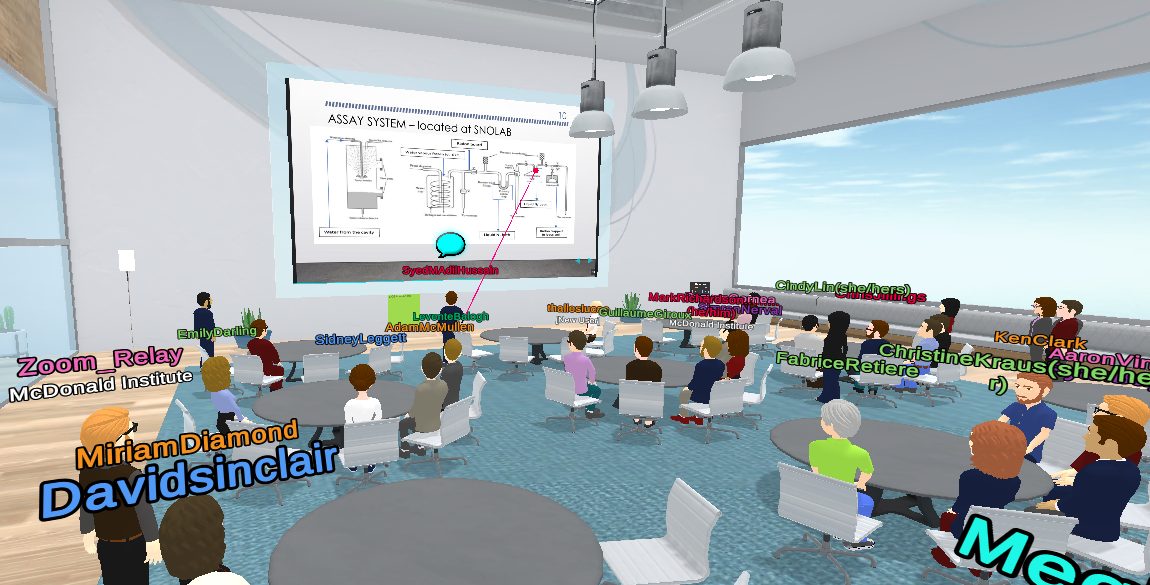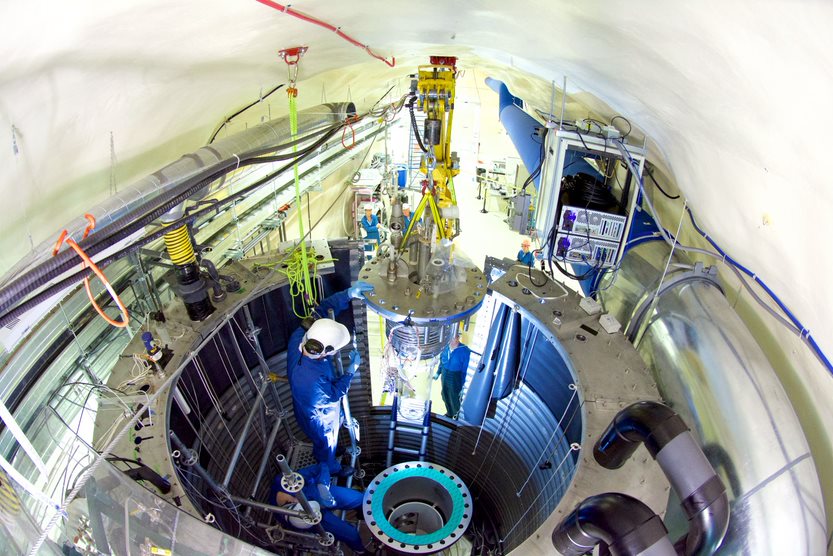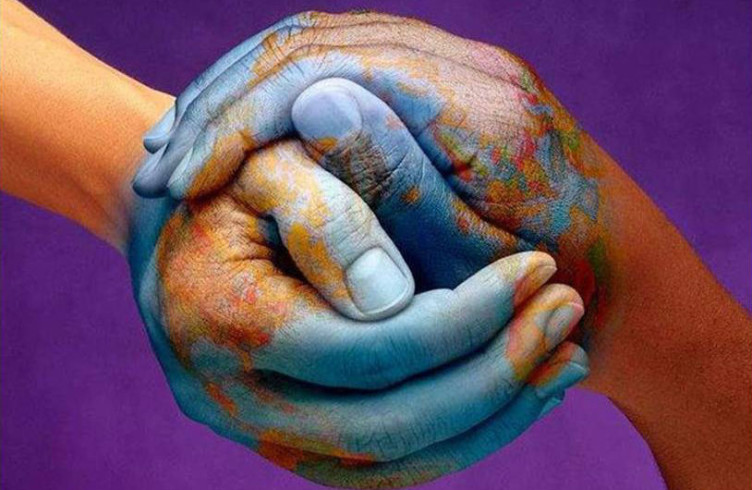News & Events
September 22, 2020
Canadian Astroparticle Physics Annual National Meeting Recap
Key Messages
- The astroparticle physics Community has shown a 27% growth in the base community and a 260% increase since 2016 with McDonald Institute Support.
- DEAP & PICO indicating world-leading results.
- SuperCDMS & NEWS-G are relocating to Canada.
- SNO+ & HALO producing results.
- SNOLAB is now the destination of choice as a premier facility in the world.
- Experiments leading towards deployment of P-ONE bring Canada one step closer to a globally connected Neutrino Observatory.
- There are no mechanisms to effectively fund large scale experiments of $100M or more. This should be addressed with the government as both facilities and experiments have begun exceeded CFI.
- There is a growing need for a consensus view across the subatomic community.
- Art McDonald presented the principles of an effective working group and key-leadership qualities.
- Keynote presenter, Eden Hennessey, discussed social identity theory models of science identity formation for her talk titled, “How Do People Know You are a Physicist?”.
- Researcher, Melanie Hall, presented key findings on student insights and recruitment strategies.
- Four cross-disciplinary intern students presented excellent virtual poster talks.
- Astroparticle physics Researchers presented their work in 15 Minute Research Talks.
- A virtual awards ceremony acknowledged the outstanding accomplishments of community members.
The 2020 Annual National Meeting
Between the 25th-27th of August, the McDonald Institute gathered members of the astroparticle physics community in VirBELA, a state-of-the-art virtual conferencing software, for the 2020 Annual National Meeting. Within the virtual space, the community went over the highlights of Canadian Research Progress, reflected on the past and future of the Astro Particle Physics Community and gave space to key-note speakers and researchers to discuss their findings. The themes of the 2020 Annual National Meeting were: science progress, leadership, equity and sustainment. Using VirBELA as the digital venue of this year’s meeting, community members had the chance to pioneer and familiarize themselves with the next generation of conferencing tools.

There has been an explosion in research capacity and excellent scientific progress in key research areas.
Based on a 2016 survey that identified all active astroparticle physicists, there has been a dramatic increase from the initial base community of 92 members. To date, the base community has increased by 27% over the last four years, with 11 new faculty members joining the discipline. “If you look at what we’re supporting now with MI, we’re now at 124” a number, explained by Tony Noble, Scientific Director of the McDonald Institute, that only refers to those funded by the McDonald Institute. The organic growth of the community and the support community of the McDonald Institute contributed to 260% in community size. Today’s astroparticle physics field constitutes 125 new faculty, HQP and administrative support (all paid through MI). This number does not include casual employees that received payment for smaller tasks or those employed for a few week’s duration. MI has enabled faculty members to set up teams and bring in Highly Qualified Personnel, contributing to the Institute’s goal to bolster the science capacity in Canada.
The Annual National Meeting also opened up the indicators of world-leading advances in Canadian Astroparticle Physics. The suite of Canadian experiments shows progress in Dark Matter, Nature of Neutrinos, new theoretical insights and the expansion of new experimental campaigns.
- PICO, which has shown world-leading results, developed a new limit on spin-dependent dark matter interactions and paved the way forward to reach 100x sensitivity.
- PICO has allowed for the initial development of exciting spin-offs, such as the scintillating bubble chamber, which will advance Dark Matter exploration and coherent neutrino scattering.
- The XENON experiment, 20 ton D successor of DEAP, performs extraordinarily well and leads to the development of 20 Ton DarkSide detector. This will act as a stepping stone for an eventual 300 Ton liquid argon detector planned for SNOLAB. Significant participation by Simon Viel and Marie Cecil.
- Motivated by new dark matter theory, SuperCDMS relocates from the Soudan Mine to SNOLAB to benefit from shielding provided from the facility’s depth underground. The experiment will be highly complementary to PICO and assisted by the CUTE facility. Notable leadership from Miriam Diamond, Alan Robinson and Wolfgang Rao.
- NEWS-G moved to Canada after Gilles Girbier joins as CERC chair and positions itself as a low mass Dark Matter Detector. Guillaume Giroux set to become the NEWS-G spokesperson in 2021.
- SNO+ uses the cavity and shell of the flagship SNO program. Data collection began in 2018 during a pure light and water phase. The experiment is now filling with a liquid scintillator for a second phase that will search for neutrinoless double-beta decay. SNO+ shows the potential to look at neutrinos in the earth, geoneutrinos, reactor neutrinos and function as a supernova monitor.
- NEXO collaboration looks towards SNOLAB as the preferred site.
- McDonald Institute provides support for HALO development in Grand Sasso with postdoctoral and technical support.
- ICECUBE finds the first evidence of the link between high energy cosmic neutrinos and a blazar. Oceans Network Canada and a group of Universities create a collaboration to explore the possibilities of a neutrino telescope. A pathfinder experiment (STRAW), placed in the Cascadia Basin off the coast of Vancouver Island, was deployed in 2018 to monitor optical conditions. This was followed in 2020 by STRAW-B, an experiment to test hardware and strategies for the Pacific Ocean Neutrino Explorer (P-ONE). The deployment of P-ONE will be a critical step towards the creation of a globally connected neutrino observatory.

Agenda
Investment leads to a well connected, greatly intensified, and vibrant theory community
The Canadian theory community has grown substantially since the hiring of Joe Bramante and Aaron Vincent. Since 2008 they have shown success in building a high-performance research team. The team consists of 3 highly ranked post-doc researchers, 3 Ph.D. students and 4 master’s students. To date, the team has published 20 papers. There is support across Canada for astroparticle physics theory. Notably, a phenomenology group from Carleton, including Yue Zhang, who increased their team’s capacity from McDonald Institute support after pivoting towards Astrophysics.
An Important Lesson from leadership Roles in Research
Art McDonald spoke as a part of the National Annual Meeting and final McDonald Institute Professional Development & Learning session. As part of his presentation, he introduced the principles of productive working groups and the qualities of a leader to exemplify. Art believed that at the core of every leader was: inclusivity, motivation, organization, communication, documentation, education, mentoring and professional development.
To develop into a leader in the field, individuals needed to be aware of four key elements. The individual should acquire large-collaboration experience, an understanding of their identity and motivation (more on this later) and a continued desire to learn (both academically and with up to date hands-on experience).
Emotional intelligence was also paramount to understand. Whether in a large or small project, emotional intelligence was critical in building and maintaining inclusive teams. Empathetic leaders can help groups return to the factual discussion, resolving problems with a best-for-science perspective.
Exercise: Try to understand your colleagues’ point-of-view. Why do they think they are right and you are wrong?
Keynote Speaker: Special Guest Dr. Eden Hennesey on Equity and the Science Identity
On the second day of the Annual National Meeting, the community gave a warm welcome to social psychologist and data-driven artist, Dr. Eden Hennesey. Sharing an image of a mirror, she posed the questions, “who are you? How do you know?” and “What tells you who you are?” to the astroparticle physics community. “Questions,” Hennessey said, “social scientists and social psychologists have pondered for decades.”. The most popular answer – social identity theory. A theory that claims that our social identity consists of “aspects of our self-image that derives from the social categories with which we identify.” For example, John’s sex was male at birth, so he chooses to identify as a man.
Dr.Hennessey used these queries to begin to uncover some of the Equity, Diversity and Inclusivity Issues that exist in the physics community. To illustrate this, Dr.Hennessey shared a model by Fiske et al. that suggests that all humans beings leave impressions on two dimensions: warmth and competence. Problems begin to arise when a member of the group is perceived as having opposing attributes. As an example, the stereotypically perceived warmth of women clashing with the stereotypical competence of scientists. To fit in, people will distance themselves from their identity to conform to the stereotypical image of their occupation. This identity conflict can cause a significant impact on the individual, whose contradictory identities (referred to as identity interference) can lead to lower performance on science tasks and psychological well being. These impacts are amplified for women of colour and those in underrepresented groups.
What about confronting this discrimination faced in the workplace? Dr.Hennessey explained that while it was possible (though in reality unlikely), that there were both positive outcomes and consequences of confronting. While a confrontation about these issues could reduce future bias, increase well being, and empower the individual, there were also detriments to the action. Individuals who chose to do so incurred negative social costs in the form of derogation, retaliation and even economic repercussions (e.g. not being considered for a promotion). Dr.Hennessey demonstrated these findings through her own research that asked participants to read about a woman who decided to confront bias in the workplace. Her results indicated there was a drastic change in the perception of the woman due to her confrontation. Dr.Hennessey saw an increase in bossiness, competence and even the difficulty of education when participants read about the dispute. Factors such as bossiness were rated even higher when the participant of the research study was a male.
Using a piece of art titled Turning the Tables in STEM, Dr. Hennessey illustrated the apparent mismatch that dictated art and science were totally opposing or mutually exclusive fields. In organizational literature, there is evidence that more diverse groups tend to have greater creativity and quality. As such, is there room to include the Arts within STEM (STEAM)?
To conclude, Dr. Hennessey left the community with the question of “how can you be a part of an effort to make science and physics specifically, more inclusive?”
A Discussion on the Sustainability of the Astroparticle Physics Community
“It would be $5,000,000 a year, without faculty salaries, to support everything we’re doing,” stated Tony Noble during the Sustainability Discussion. The open forum allowed the astroparticle physics community to voice which McDonald Institute functions they saw as valuable in the longer term. The McDonald Institute recognized the ongoing challenge of the recruitment process of the HQP. Additionally, Tony Nobel questioned the community’s perception of the value of the McDonald Institute. Fouad Elgindy gave a breakdown of the McDonald Institue’s budget before opening up the session to questions.
Miriam Diamond voiced her concern on how the pandemic has impacted international collaborations. To which Tony Nobel acknowledged that we will have to see the implications in the long term as the experimentation has come to a grinding halt.
Fabrice Retiere indicated that there was definite value in the HQP process and the quick turn around it provides. However, concern arose regarding how the Institute has chosen to invest in projects. A concern echoed by Tony Noble, who wondered if the streaming lining and adjudication of certain programing undermined the quality of science. Peter Skensved and Mark Chen also mentioned a similar concern regarding the funding, suggesting the need for a re-evaluation of the HQP selection and management process.
Thomas Brunner indicated the high value of the technical resources (such as the Mechanical Engineer at McGill) that have been provided by MI funding opportunities.
There is a discussion that beyond the 7th year at NSERC that there is potential to either pursue the Institute’s funding sustainment through Queens or a partnership among the other institutions. There may also be an opportunity for the McDonald Institute to apply as an MSI project. Some long term success has already been found with several faculty transitioning off the CIFREF to an NSERC grant.
However, many institutes have seen lower spending, while positions have not been filled at the rate that was anticipated. If not resolved, this will lead the Astroparticle physics community to a talent deficit. A lack of talent will affect both the progress of experimentation and the ability to solicit funding from the government.
To offer insight into what may be causing the community talent pool deficit, the Institute invited Melanie Hall to discuss her research findings on the decision-making of students to the annual national meeting. Melanie previously worked within the Astrophysics community before her masters at Queen’s University. Melanie’s data was collected from survey questionnaires sent out to physics undergraduates and grad students across Canada (with the assistance of the Canadian Association of Physics).
The top three sources of information for students were:
- Being able to speak to people in the field
- Graduate Student Fairs
- Departmental Website
When weighing the benefits and opportunities, students rated the following highly in their evaluation:
- Understanding the particular research field
- Research Opportunities
- The particular field of study available.
- Someone who they wanted to work with
For the decision-making process in choosing a university:
- Website functionality and aesthetic was absolutely essential
- Faculty information and friendliness through had a large impact on the student’s decision-making
- Campus visits & Summer programs were highly influential
One of the most poignant challenges, however, was the familiarity students had with the field of astroparticle physics. Melanie found that of the undergraduate students she surveyed, 60 percent said they did not know the field of astroparticle physics existed. Of the 33 percent that was aware, many did not know about the field until 4th year.
Melanie offered six recommendations to the community to alleviate recruitment challenges:
- Support faculty with recruitment
- Rebrand astroparticle physics opportunities
- Introduce students earlier
- Improve websites
- Offer campus visits/summer programs
- Increase financial support
Presentations and Awards
As part of the Annual National Meeting, offers were extended to the astroparticle physics community to present their research findings in either poster or 15-minute research talk formats. Additionally, four cross-disciplinary interns presented their recent work in poster presentations during the first day of the conference with the added benefit of showcasing their work to Art McDonald. The second and third day featured members of the community presenting their research in VirBELA’s 3D environment.
Click here to see the program containing the speakers and abstracts for the 2020 Annual National Meeting:
To celebrate the significant contributions made by students within the community, three students were nominated and selected as recipients of the McDonald Institute Student Achievement Awards. As well, recognition for excellence in a 15-minute virtual research presentation was awarded.
Award Winners:
The McDonald Institute Award for Research Contribution – Soud Al Kharusi
The McDonald Institute Award for Innovation-Leadership – Colin Moore
The McDonald Institute Award for Outreach & Engagement – Benjamin Tam
The McDonald Institute Award for Best CDI Poster Presentation and Talk- Emily Darling
The McDonald Institute Award for Best 15-Minute Research Presenter – Nirmal Raj
The McDonald Institute Award for Best Student Presenter – Simran Nirval
Impressions of the VirBELA 3D Environment
The environment allowed for a substantially more interactive meeting setting than that of the regular zoom-based conference. Attendees were able to interact and converse with one another in a user-friendly environment. There was a rather quick learning curve for presenters and attendees, however, most technical delays were easily resolved. Within the constraints of the platform, some of the avatars identities’ were recognizable to community members. Several attendees expressed an interest in seeing the technology expand the range of body types, clothing, skin colour, accessibility devices that are available for remote conferencing avatars”. Overall, the environment was successful in allowing conference attendees the opportunity to pioneer virtual conferencing software.

